A bird whose body is primarily adorned in a rich, dark blue plumage, complemented by a pale-gray hood. When in flight, it showcases broad, eye-catching lines of pale blue running across the middle of its wings, adding to its overall beauty and uniqueness
Meet the Blue-bellied Roller:
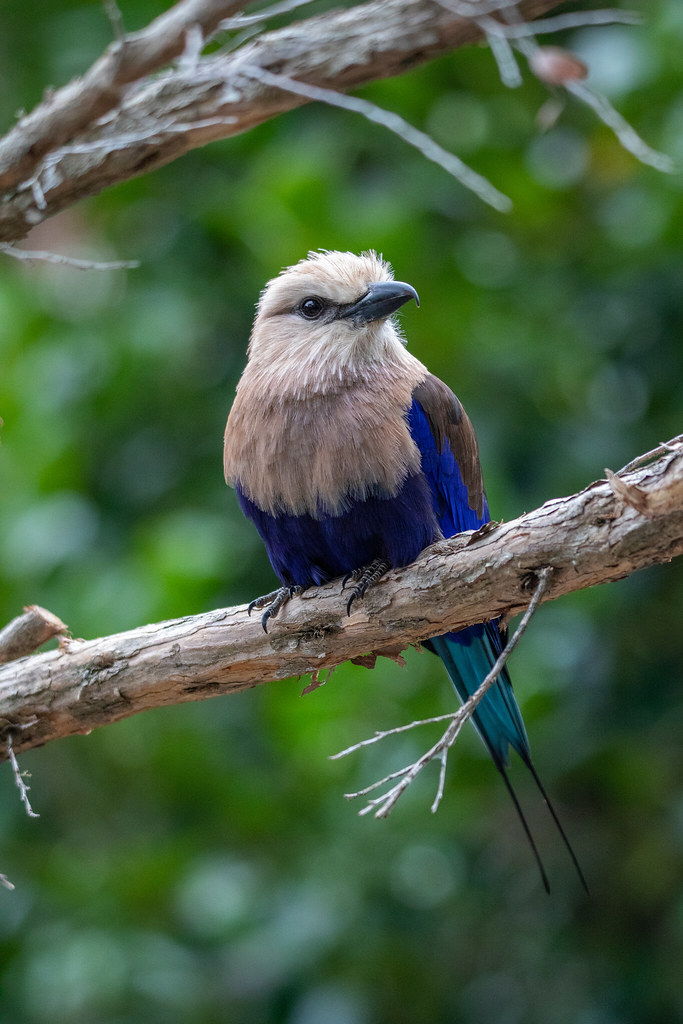 “Blue-bellied roller” by Guang Chen (陈光) is licensed under CC BY 2.0.
“Blue-bellied roller” by Guang Chen (陈光) is licensed under CC BY 2.0.
Description: The blue-bellied roller (Coracias cyanogaster) is a bird belonging to the roller family. The blue-bellied roller is a sizable bird, approaching the dimensions of a jackdaw, measuring between 28 to 30 cm (11 to 12 inches) in length. It exhibits a dark brown back, with the head, neck, and breast covered in a buffy or chalky white plumage, while the rest of its feathers are predominantly blue. Adult blue-bellied rollers possess tail streamers measuring approximately 6 cm (2.4 inches).
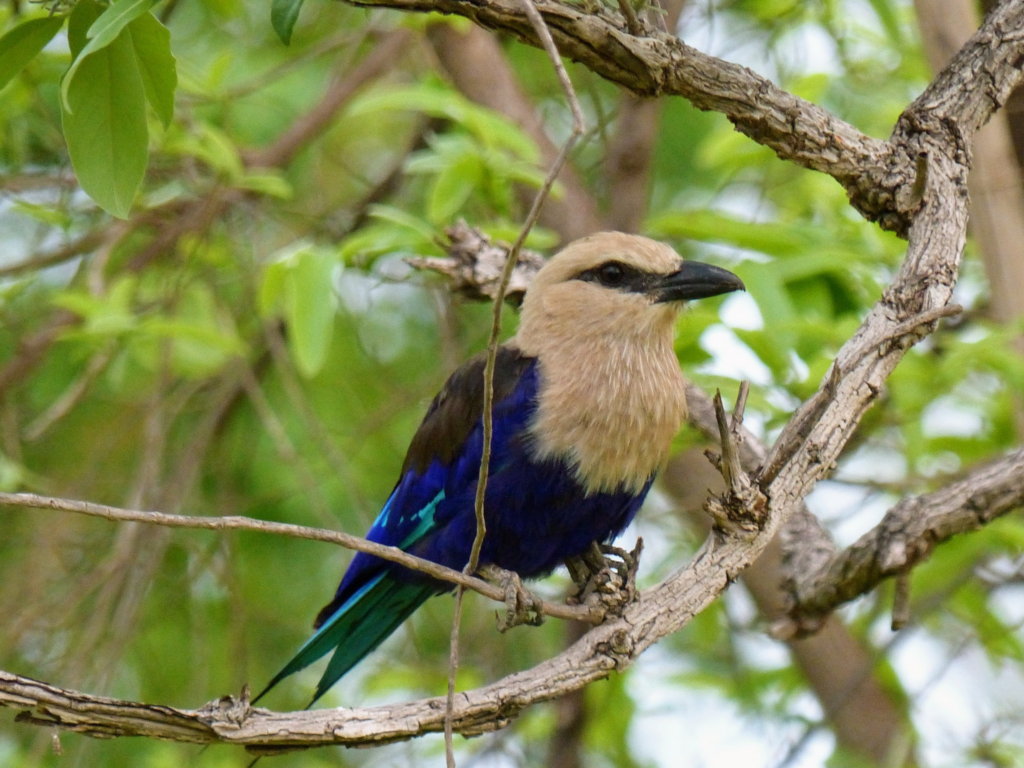 “blue-bellied roller, carraca blanquiazul, rolieiro-de-barriga-azul, rollier à ventre bleu” by eamonccorbett is licensed under CC BY 4.0.
“blue-bellied roller, carraca blanquiazul, rolieiro-de-barriga-azul, rollier à ventre bleu” by eamonccorbett is licensed under CC BY 4.0.
Both sexes resemble each other, though juveniles have a less vibrant appearance compared to adults.
The blue-bellied roller was scientifically classified as Coracias cyanogaster in 1816 by the French naturalist Georges Cuvier. This classification was based on the work of François Levaillant, who described and illustrated “Le Rollier à ventre bleu” in 1806.
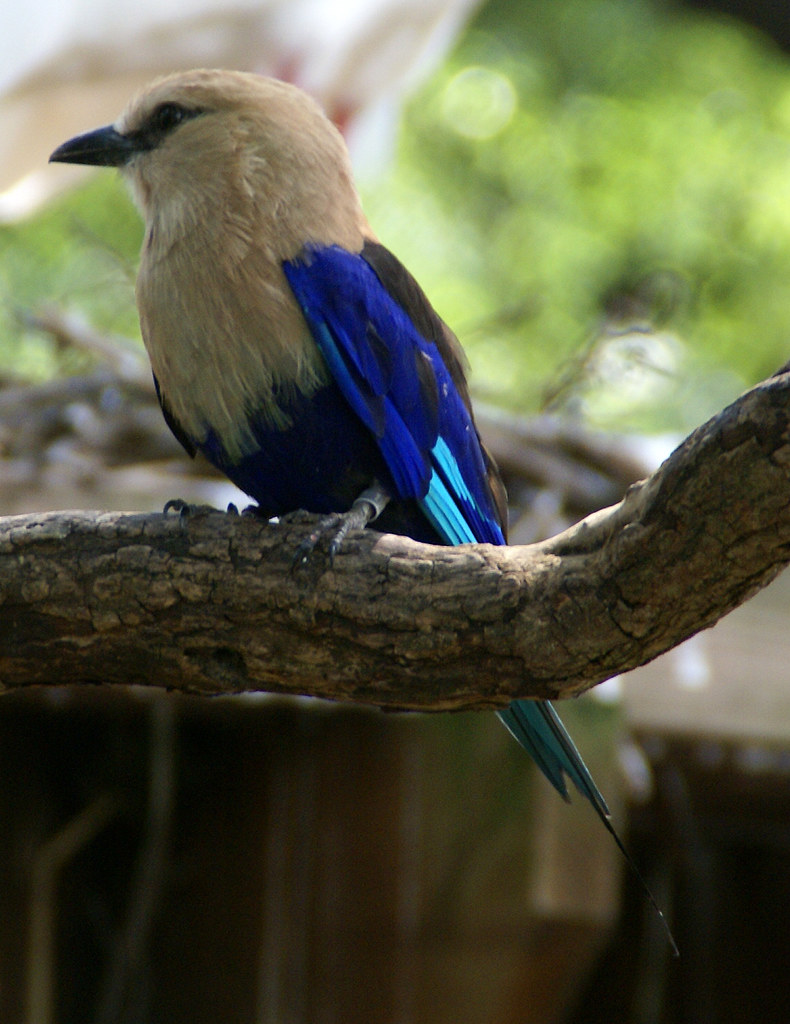 “blue bellied roller” by lwolfartist is licensed under CC BY 2.0.
“blue bellied roller” by lwolfartist is licensed under CC BY 2.0.
It is known to breed across Africa within a relatively narrow geographical band stretching from Senegal to the northeastern regions of the Democratic Republic of the Congo. These birds are typically residents, although there are occasional local seasonal movements, and they tend to inhabit mature, moisture-rich savannahs dominated by Isoberlinia trees.
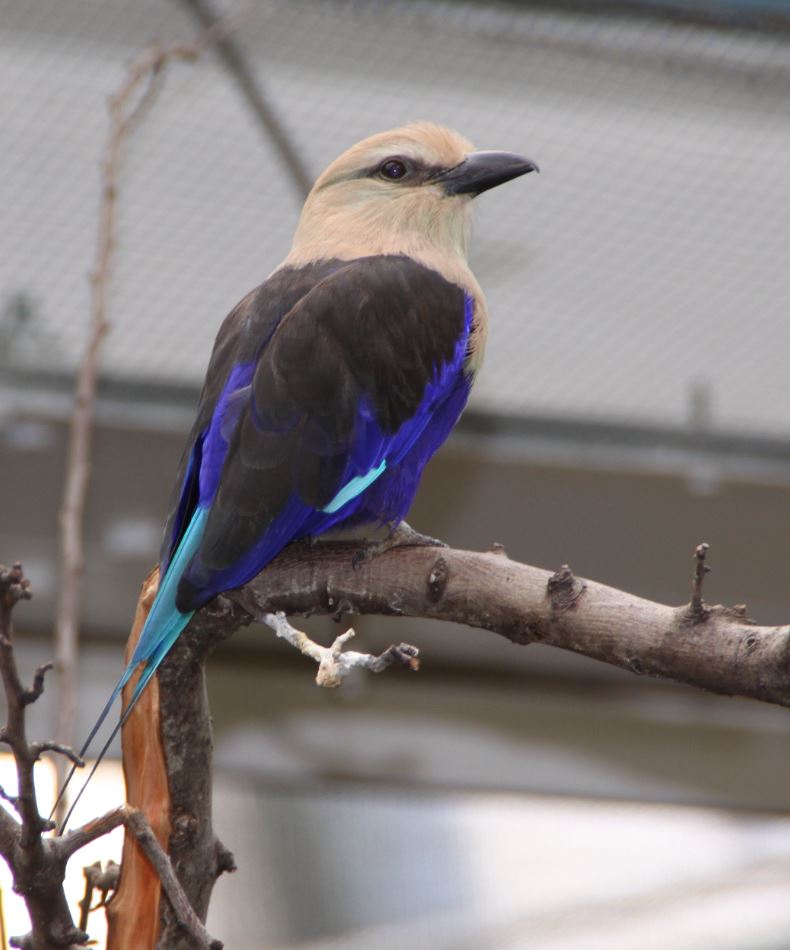 “Blue-bellied Roller -coracias cyanogaster- (5572972422)” by Drew Avery is licensed under CC BY 2.0.
“Blue-bellied Roller -coracias cyanogaster- (5572972422)” by Drew Avery is licensed under CC BY 2.0.
Distribution and Habitat: Blue-bellied rollers are commonly found in warm, open landscapes with some tree cover. They often perch conspicuously on trees, posts, or overhead wires, reminiscent of giant shrikes, while scanning for grasshoppers and other substantial insects that make up their diet.
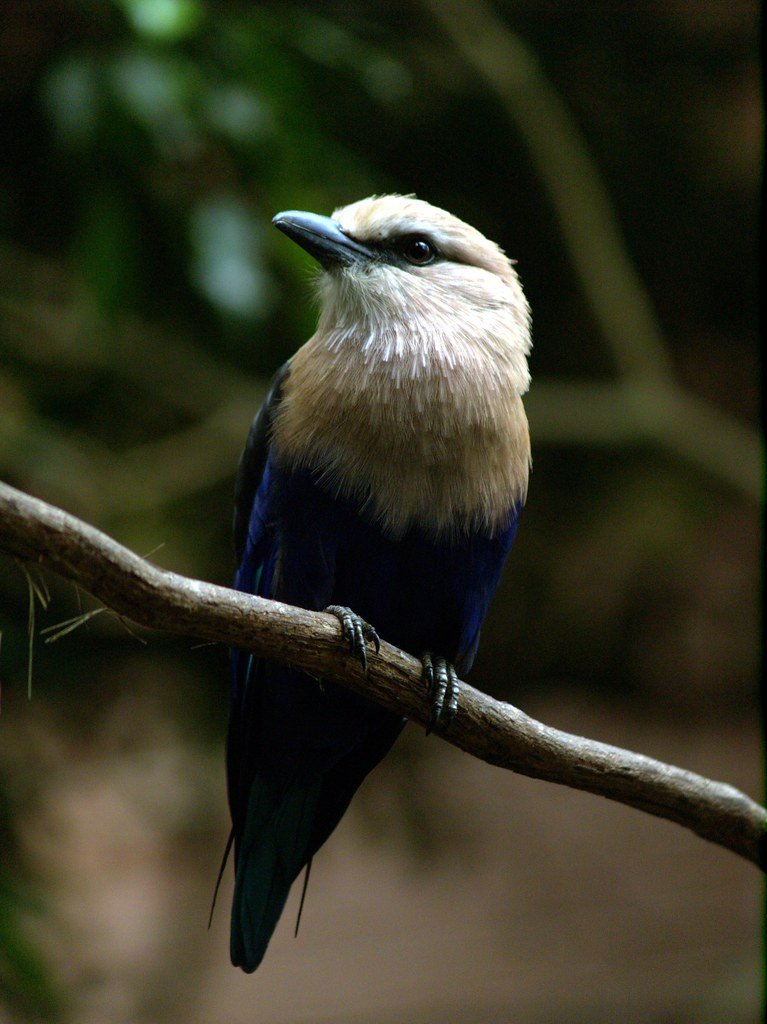 “Blue-bellied Roller at the National Aviary (Pittsburgh, PA)” by takomabibelot is licensed under CC BY 2.0.
“Blue-bellied Roller at the National Aviary (Pittsburgh, PA)” by takomabibelot is licensed under CC BY 2.0.
Nesting Behavior: Female blue-bellied rollers exhibit a nesting preference for tree holes, with a notable affinity for hollow palm trees as nesting sites. Within these secluded nooks, they carefully lay clutches of 2 to 3 eggs. Observations suggest that both male and female rollers participate in incubating the eggs, although it appears that females invest more time tending to the nest compared to their male counterparts.
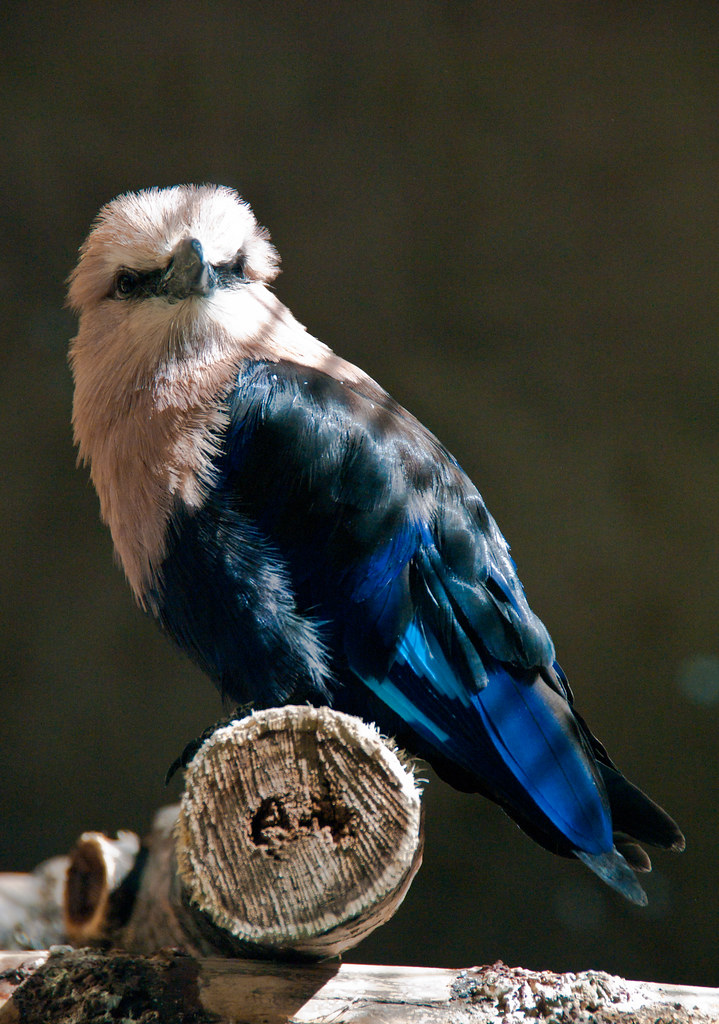 “Blue-bellied Roller” by Kurayba is licensed under CC BY-SA 2.0.
“Blue-bellied Roller” by Kurayba is licensed under CC BY-SA 2.0.
These birds are notable for their powerful, direct flight, characterized by the striking contrast between their brilliant blue wings, dark back, cream-colored head, and trailing tail streamers. Their call is a distinctive harsh clicking sound, often described as “ga-ga-ga.”
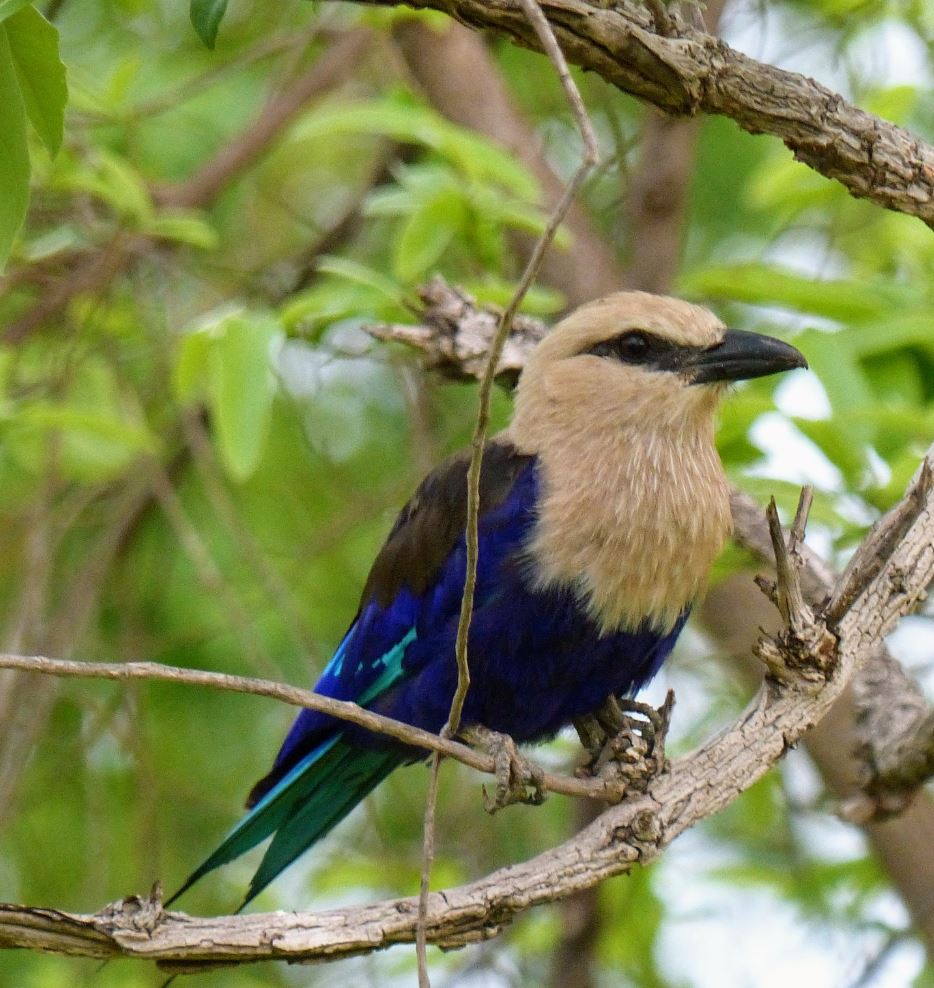 “blue-bellied roller, carraca blanquiazul, rolieiro-de-barriga-azul, rollier à ventre bleu” by eamonccorbett is licensed under CC BY 4.0. (cropped)
“blue-bellied roller, carraca blanquiazul, rolieiro-de-barriga-azul, rollier à ventre bleu” by eamonccorbett is licensed under CC BY 4.0. (cropped)
Conservation Status: This species enjoys a widespread and abundant presence throughout its extensive range. Consequently, it is assessed as being of “Least Concern” on the IUCN Red List of Threatened Species.
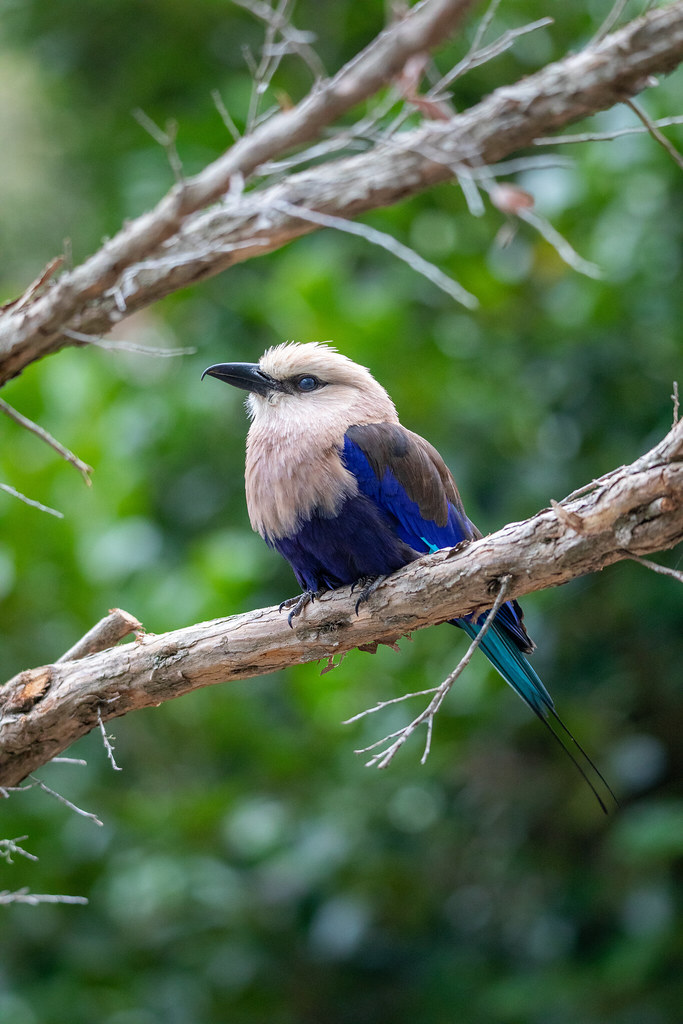 “Blue-bellied roller – Blinking eyes” by Guang Chen (陈光) is licensed under CC BY 2.0.
“Blue-bellied roller – Blinking eyes” by Guang Chen (陈光) is licensed under CC BY 2.0.
Listen to this bird next:





